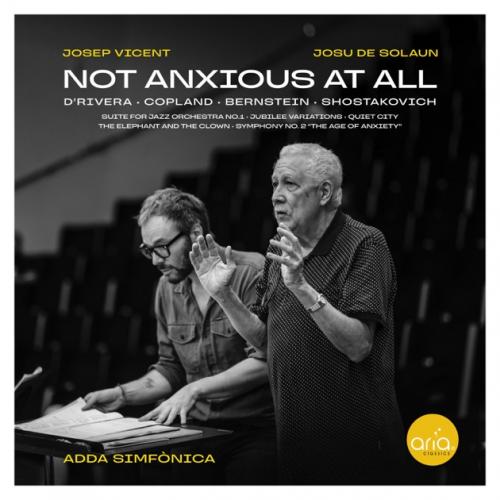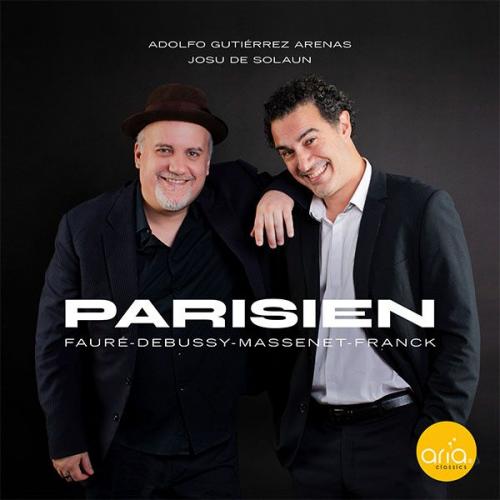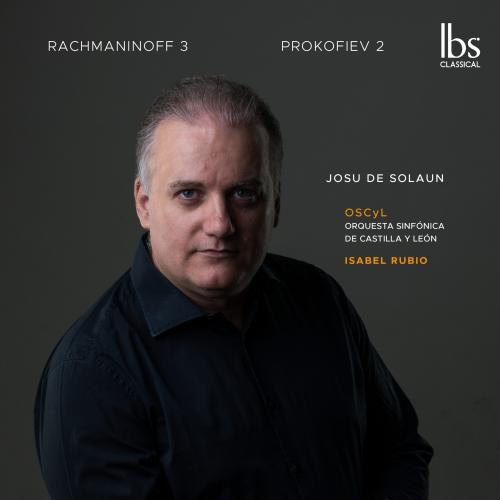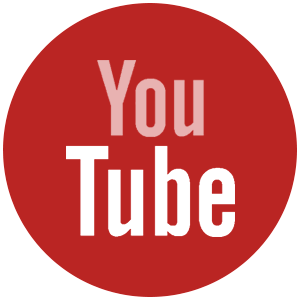Teaching
I love teaching. I always have. It is one of my life's passions. And my approach to it is rooted in a deep desire to return to a more integrated, poetic, and human understanding of what it means to be a musician. A return to training what I call generalist musicians, and not specialised ones. A radical return to a certain idea of wholeness in music, where musicians are not anymore divided between so-called interpreters and so-called composers. A radical return, but not a nostalgic return (I do not idealize the past) , rather a forward-looking recovery of what has been lost in the wake of modern hyper-specialization and industrialized musical training.
In that sense, today's music education is often governed by three central dogmas: history, style, and technique (each treated as if it were an end in itself). But these are not my compass points. My emphasis is not diachronic (we are not tracing the evolution of styles) but rather synchronic, seeking musical universals. I value meaning over abstraction, tone over sound.
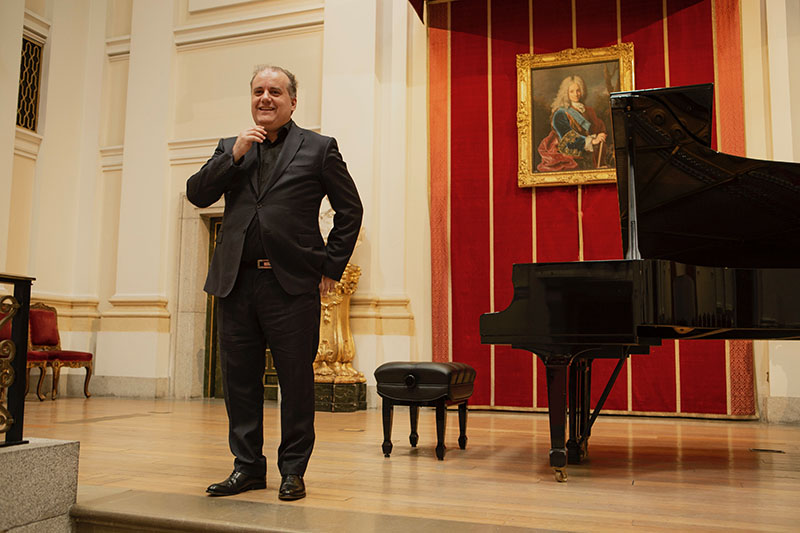
History, while valuable, is to me not synonymous with music, nor with the arts. History and Music, they may overlap, occasionally, like the converging circles of a Venn diagram, but much of what interests me as a musician lies very much outside their intersection, and it is precisely in that space that my teaching interests begin. I do not teach music as a chapter in a history textbook, nor do I ask my students to embody an age, or a style, or an author, or to reconstruct a century. I seek instead to awaken a direct, embodied relationship with musical tones and intervals: music not as mediated knowledge, but as immediate practice music as un-mediated. To play Beethoven as one might sing a lullaby to a child, with warmth, presence, and ownership, is far more vital to me than a "stylistically correct, authentic, informed, knowledgeable, faithful" interpretation filtered through historical distance (the rhetorical distantiaton of the expert, the philologist, the ethnologist, the ethologist, the virtuoso, the musicologist, etc.). I am not interested in making music in "quotation marks". I am not interested in producing "historically informed musicians", even if that has its place elsewhere; I am interested in cultivating musicians who are existentially connected to what they play.
Style, too, is not a goal. I am far more drawn to the drama of the tones themselves, to the interior lives of intervals, than to the statistical or taxonomic descriptions of any given period or any given canonic author. Because music, to me, is not a museum. In fact, I truly believe music is really the only art form that cannot be museumized. It resists it with vengeance. And so I do not approach style as a historically materialist, historical science, but as an expression of personhood, of deep individuality. What interests me are not style categories, but the ancestral, perennial, universal qualities that cut across time: gesture, contrast, sameness, difference, motion, tension, distension, cadence, lament, exuberance, invocation, ritual. I want my students to feel that, whether they are playing Machaut, Mompou, or Monk, they are touching something that is always now.
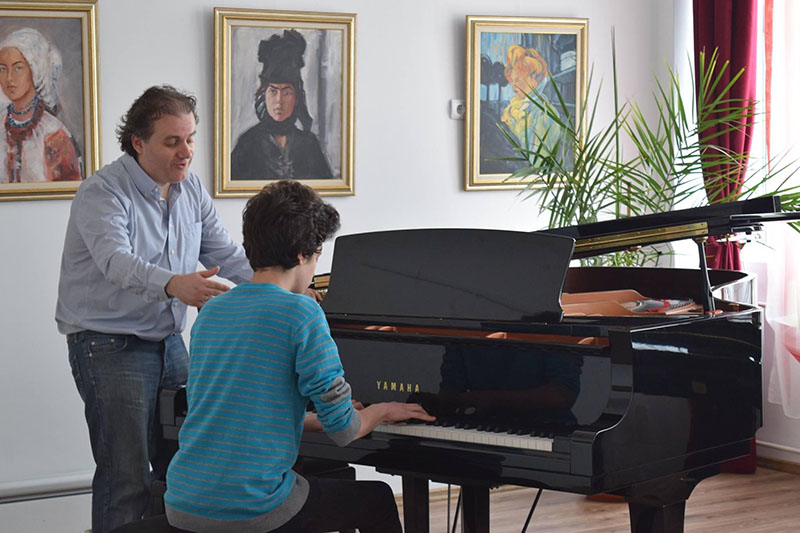
Technique, of course, is not absent, but I do not teach it as a system of fixed dogmas or virtuoso interest. Technique, for me, is simply the living sum of one's capacity to make music, to "musick". It is something to be practiced, not rigidly intellectualized. It grows through contact with the essence of music itself (melos) and through attentive, embodied practice. It is not a trophy: it is a tool. As a teacher, I am not interested in producing virtuoso pianists, singers, conductors, or composers. Virtuosity, in the modern sense, has become a distorted measure, a product of Taylorist logic applied to the arts. I seek something more enduring, more personal: mastery without mechanization, rigor without rigidity.
Instead, I work to cultivate what I call the six pillars of the complete musician:
to sing (poetic solmization, that is, singing while conducting), to teach, to conduct, to compose, to improvise, and to perform.
These are not separate disciplines, but different facets of the same musical being. Singing here does not mean operatic projection, nor vocal technique, but the ability to breathe a phrase, to hear inwardly. Also, for me, in the music classroom, conducting is not about metrical control, or beating precision, or planned cheironomy, but about shaping flow, pulse, diction, tension, release, motion, repose, character, form, and expressive gesture. And composing and improvising are not reserved for the "gifted", nor are they purely specialised, stenographic disciplines, but instead form the very foundation of musical thought. To teach is to accompany someone in their discovery of music and of music universals. And performing or composing are simply the acts of sharing presence through musical tones.
In my studio, we begin where music begins: in the voice and the ear. We sing improvised discants over drones, isons, gimmels, and faubourdon, gradually advancing to more complex spontaneous polyphony: what was once known as chanter sur le livre or contrapuntare alla mente. We also practice oral improvisation at the keyboard, using partimento-like models, harmonic progressions (marches harmoniques), and cadential patterns, eventually moving to real-time contrapuntal invention. Alongside this, we engage in written counterpoint, including Fuxian species work, canon, and fugue, constantly traversing between oral and written, improvised and composed, between res facta and what was once known as res ficta, the fluid space where music breathes before it fossilizes.
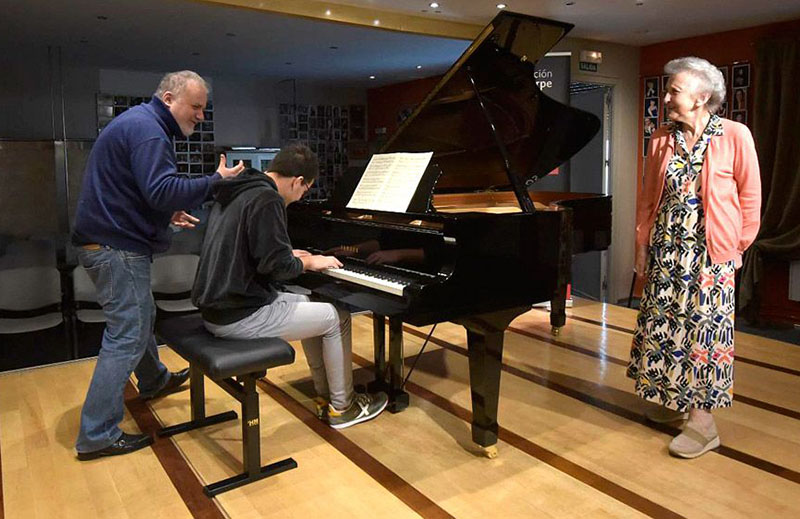
We compose and arrange. We explore the architecture of music through making, not merely describing. But we don't approach composition from a historical or stylistic lens. My emphasis is not diachronic (we are not tracing the evolution of styles) but rather synchronic, seeking musical universals: cadence, imitation, contrast, stasis and movement, what Plato called the Magista Genae (the Great Ideas): the same, the different, rest, motion, and being - all of which are at the heart of Music too. In this light, kinesis becomes a way to understand modulation, tension, transformation; stasis becomes a poetic image of repose, cadence, and equilibrium. The same reveals itself in motif, iteration, ritual; the different, in variation, surprise, and imitation. These universals serve as our guiding stars: across cultures, genres, and centuries.
To explore them fully, we look not only at the European canon, but also to the great reservoir of the world's oral and folk traditions. Like Kodály, I believe in the power of folk song as both pedagogical tool and spiritual mirror. We memorize, we sing a cappella, we improvise with these materials. Folk songs reveal the structural DNA of musical universals, and reconnect us with the origins of musical intuition. My teaching draws freely from the pedagogies of Kodály, Willems, Dalcroze, and Edwin Gordon, in which movement, memory, sonic imagination, and embodied listening come before theoretical abstraction.
We may also touch upon Indian ragas, tabla cycles, and other oral traditions: not as experts or virtuosos, but as listeners, seekers, and students of the shared tropes and archetypes that echo across human expression. This attention to both the oral and the written (and the dynamic interdependence between them) is shaped by the thinking of philosophers like Walter Ong, who illuminate the intersections of voice, memory, literacy, and the body.
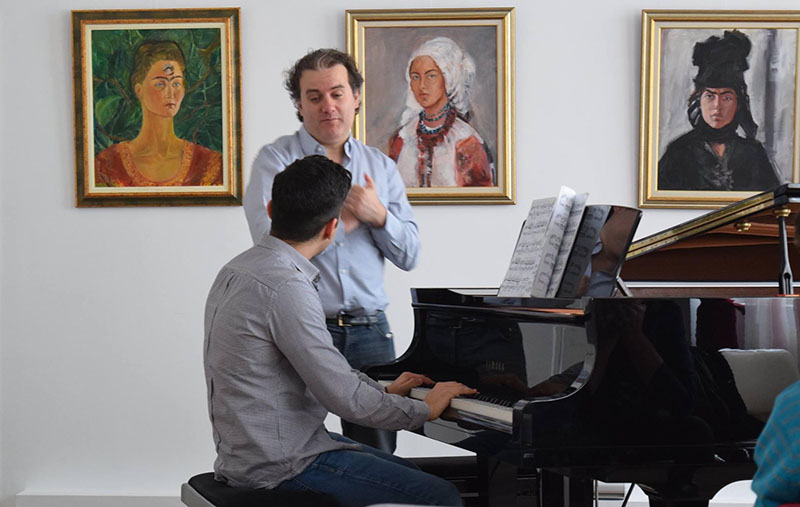
We work with repertoire too, of course, but repertoire is not the bulk of the music lesson anymore (just a part: we approach it from within) sometimes through Stanislavski's acting method, sometimes through musical semiology, topic theory, or simple storytelling. The goal is always to restore music to its poetic, imaginative, and communicative essence: to awaken its metaphoric and allegorical dimensions.
These main practices are gently woven in:
a) Conducting, through the lenses of Celibidache's "proportions", Gregorian cheironomy, jazz phrasing, flamenco compás, or free movement
b) Improvisation, both solo and ensemble
b) Composition and arrangement, both traditional and more experimental
d) Performing as a rhapsode and not as an interpreter
e) Teaching methods, to learn how to listen, guide, and inspire
f) General musical reflection, to connect inner intention with outward expression
I also try to prepare students for real-world moments: recitals, auditions, collaborations, and teaching situations. But always with the understanding that performance is not the goal: it is the visible crest of an inner sea.
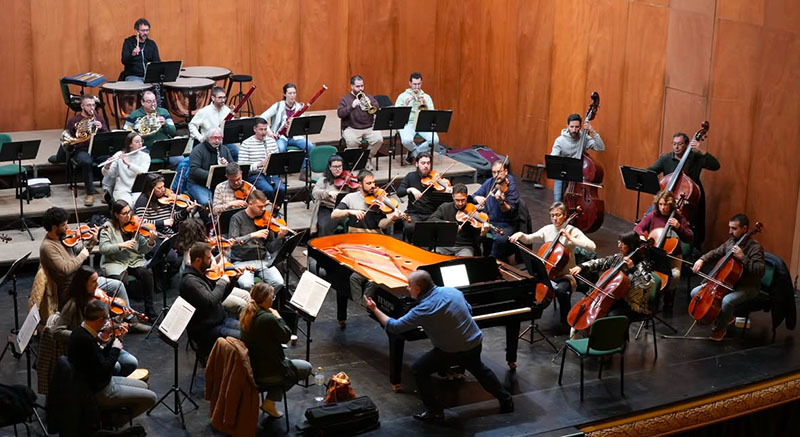
Above all, I try to create a space of curiosity, openness, and shared discovery: a studio where each person is encouraged to develop their voice, their instincts, and their creative agency. I do not promise transformation through perfection. I offer the slow, meaningful labor of attention, imagination, and musical literacy.
This is not a training ground for specialists or technicians, but a living workshop for the cultivation of musical thought, where sound is not merely executed but understood, felt, and lived. Where one learns not simply how to play, but why to play, what to listen for, and how to connect with others through music.
Whether you come to music as a lifelong pursuit or as a personal sanctuary, whether you aim to teach, to create, to accompany, or simply to deepen your understanding, this space is for you. It is open to professionals and non-professionals alike, to the curious, the interdisciplinary, the restless, the poetic, the philosophical.
If this approach resonates with you, I offer private and group lessons, flexible in form and adapted to each student’s background, tempo, and vision.
Please don't hesitate to reach out. I would be glad to hear from you.
